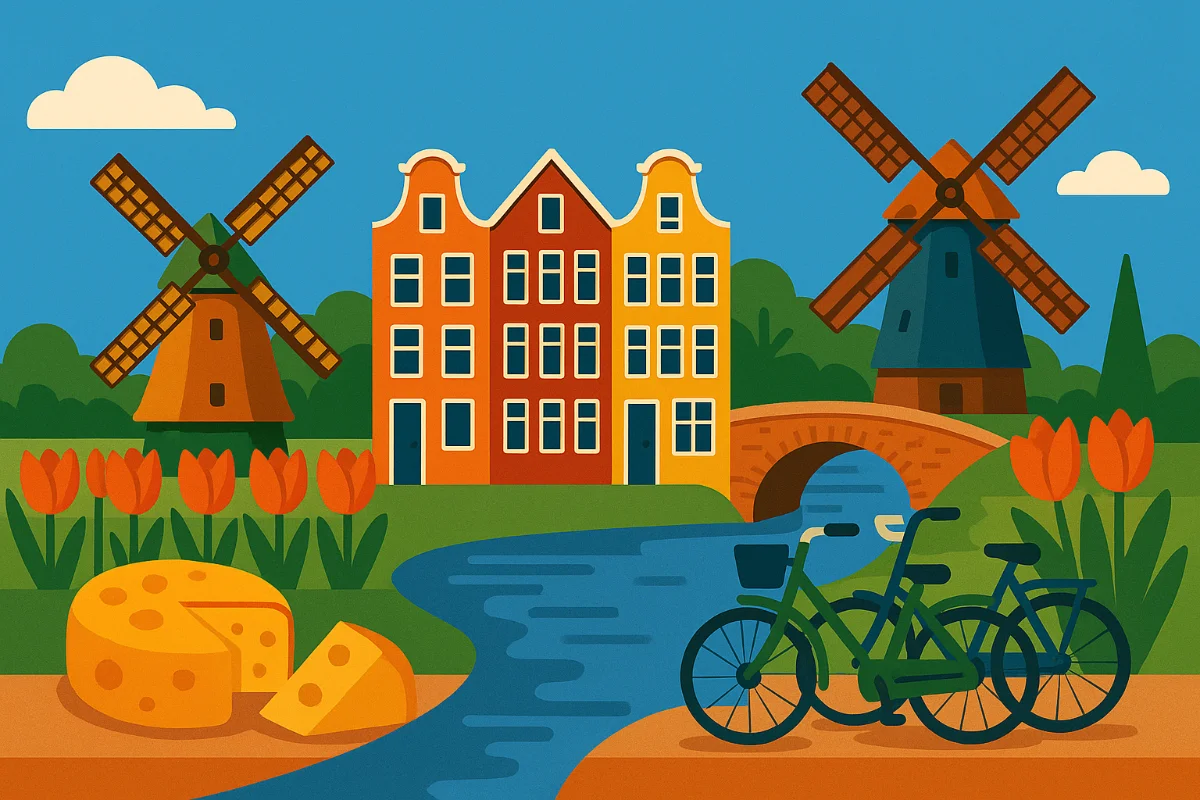Advanced Word Order and Stylistic Variations (B2 Level)
Standard Dutch word order (Subject-Verb-Object in main clauses, Subject-Object-Verb in subordinate clauses) provides a foundation. At B2, understanding and using variations allows for emphasis, better flow, and more sophisticated expression. These variations often involve placing elements other than the subject at the beginning of the sentence (topicalization/fronting) or changing the order within clauses.
1. Topicalization/Fronting (Emphasis in Main Clauses):
- Placing an element (object, adverbial phrase, prepositional phrase, even a subordinate clause) at the beginning of a main clause forces inversion (Finite Verb in 2nd position, Subject in 3rd position).
- Purpose: To emphasize the fronted element or create a smoother link to the previous sentence.
- Object:
Die film heb ik gisteren gezien.(That film I saw yesterday.) - Emphasizes the film. - Adverb (Time):
Morgen ga ik naar Amsterdam.(Tomorrow I am going to Amsterdam.) - Emphasizes the time. - Adverb (Place):
Hier mag je niet parkeren.(Here you may not park.) - Emphasizes the place. - Prepositional Phrase:
Met veel plezier heb ik de uitnodiging aanvaard.(With great pleasure I accepted the invitation.) - Emphasizes the manner. - Subordinate Clause:
Omdat het regende, bleven we binnen.(Because it was raining, we stayed inside.) - Standard structure when starting with a subordinate clause.
2. Inversion (Beyond Topicalization):
- Questions: Yes/no questions start with the finite verb (
Heb je...?,Is hij...?). W-questions often start with the question word, followed by verb-subject (Waarom is hij te laat?). - Sentences starting with conjunctions like
dus,daarom,toch,dan: These often trigger inversion. Het regende, dus bleef ik thuis.(It was raining, so I stayed home.)Hij was ziek, daarom kwam hij niet.(He was sick, therefore he didn't come.)
3. Extraposition (Het as Provisional Subject/Object):
- Moving a clause (especially
dat-clauses orte-infinitive clauses) to the end and usinghetas a placeholder earlier in the sentence. This is often more natural than having a long clause as the subject or direct object. - Subject:
Het is jammer dat je niet kunt komen.(It is a pity that you cannot come.) - More common thanDat je niet kunt komen, is jammer. - Object:
Ik vind het belangrijk om dit te weten.(I find it important to know this.) - More common thanIk vind om dit te weten belangrijk.
4. Word Order Within Clauses (Subtle Variations):
- Middle Field (
Middenstuk) Variations: In subordinate clauses (verb-final) or the middle part of main clauses, the order of elements like adverbs, objects, and prepositional phrases can sometimes vary for subtle emphasis, although Time-Manner-Place is a common neutral order. - Neutral:
...omdat ik gisteren in de stad een vriend heb ontmoet.(...because I met a friend yesterday in the city.) - Emphasis on place:
...omdat ik gisteren een vriend in de stad heb ontmoet. - Emphasis on time:
...omdat ik een vriend gisteren in de stad heb ontmoet. - Placement of
niet: Crucial for meaning. It generally precedes the element it negates (often the verb at the end of a subordinate clause, or a specific adjective/adverb/noun phrase). ...dat ik hem niet heb gezien.(...that I did not see him.)...dat ik niet vandaag kom.(...that I am coming not today.)
5. Cleft Sentences (Het is ... die/dat ... and Wat ... is ...):
- Used for strong emphasis on a specific element.
Het is Marie die de prijs heeft gewonnen.(It is Marie who won the prize.) - Emphasizes Marie.Wat ik nodig heb, is een lange vakantie.(What I need is a long holiday.) - Emphasizes the need for a holiday.
Importance for B2:
- Using fronting/topicalization makes your Dutch sound much more fluent and less like direct translation.
- Recognizing these variations is key to understanding emphasis and flow in native speech and writing.
- Mastering extraposition makes sentences with clauses as subjects/objects sound more natural.
- Understanding cleft sentences helps identify the main focus of a statement.

